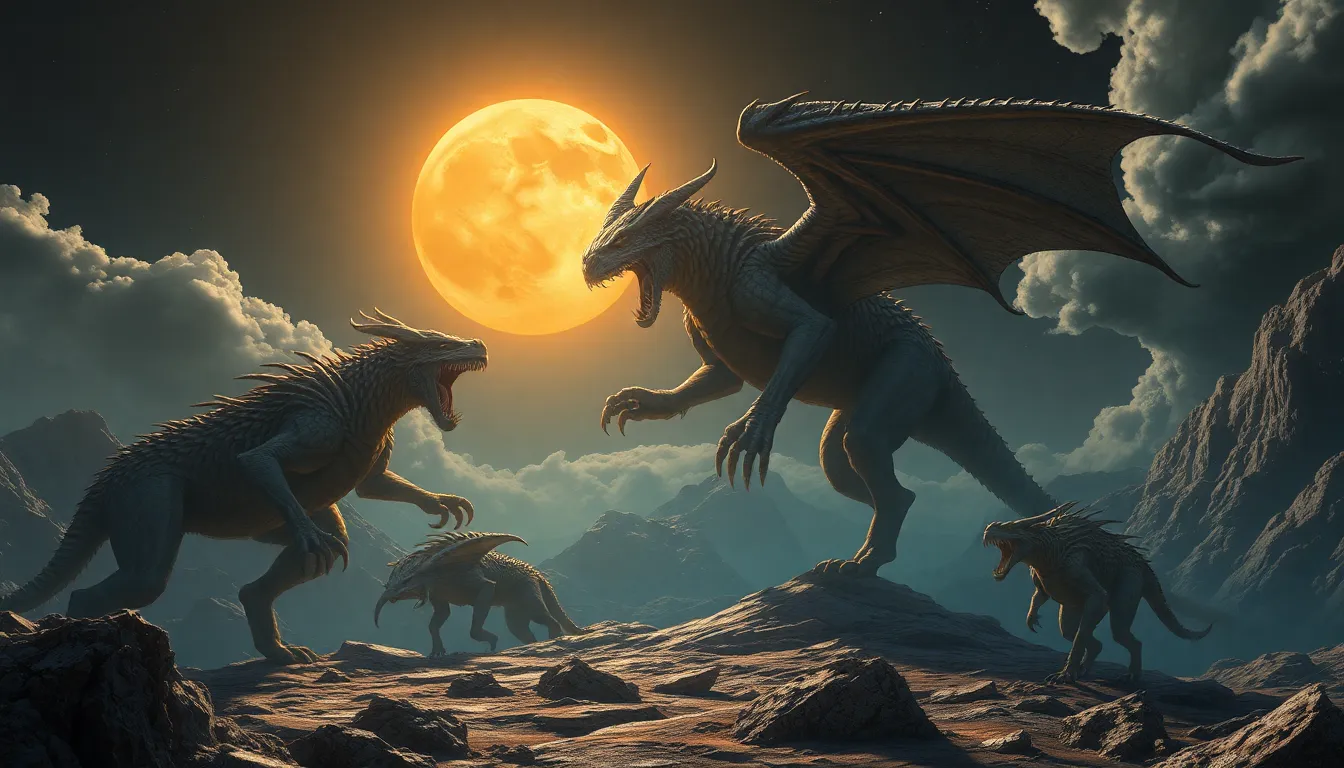Gaia and the Birth of Monsters: Mythical Creatures from the Earth
I. Introduction
In Greek mythology, Gaia, often referred to as Mother Earth, is a primordial deity revered as the personification of the Earth. She is not only a figure of nurturing and fertility but also a potent symbol of creation and destruction. Monsters in Greek mythology serve as powerful narrative devices that embody chaos, challenges, and the consequences of hubris. This article explores Gaia’s role in the birth of monsters, examining their significance within mythological narratives and their enduring legacy in contemporary culture.
II. The Concept of Gaia: Mother Earth
Gaia is defined as the Earth itself, a foundational element in Greek cosmology. As the mother of all life, she embodies fertility and the nurturing aspects of nature. Her connections to creation are profound, as she is often depicted as the source from which all living beings emerge.
However, Gaia also represents a duality in her nature. While she nurtures and provides for her children, she can also unleash her wrath, creating monstrous beings in response to conflict or imbalance. This duality reflects the complex relationship humanity has with nature, where creation and destruction coexist.
III. The Birth of Monsters: Mythical Origins
Gaia plays a pivotal role in the creation of various monstrous beings, often born out of her desire to protect herself or to retaliate against the gods. The monsters she births serve as symbols of the primal forces of nature, reflecting humanity’s fears and challenges.
Some notable monsters birthed by Gaia include:
- Titans: The elder gods who preceded the Olympians.
- Cyclopes: One-eyed giants known for their strength and craftsmanship.
The symbolism behind the creation of monsters often revolves around themes of fear, power, and the chaotic elements of nature. They serve as reminders of humanity’s vulnerability in the face of the natural world.
IV. The Titans: Offspring of Gaia
The Titans, born from Gaia and Uranus (the sky), are significant figures in Greek mythology. They represent the primordial forces of the universe and are often associated with various aspects of nature and civilization.
Some key Titans include:
- Cronus: The leader of the Titans, known for his role in the overthrow of Uranus.
- <strong:Rhea: The mother of the Olympian gods, associated with fertility and motherhood.
- Oceanus: The Titan of the ocean, representing the vastness of the sea.
The impact of the Titans on Greek mythology is immense, as their stories set the stage for the rise of the Olympian gods and the ongoing conflicts between generations of deities.
V. Monstrous Offspring: Beyond the Titans
In addition to the Titans, Gaia birthed many other notable creatures that have left their marks on mythological tales:
- Giants: Huge beings that often challenged the gods.
- Chimeras: Fire-breathing creatures with parts from multiple animals.
- Gorgons: Female monsters, including Medusa, known for their hair of snakes and petrifying gaze.
These creatures play crucial roles in various mythological narratives, often acting as antagonists or challenges for heroes to overcome. They embody the chaotic and unpredictable aspects of nature, representing the struggles of life in a world governed by powerful forces.
VI. The Relationship Between Gaia and Her Monsters
The dynamic between Gaia and her monstrous children is complex. While she creates them, they often rebel against her, reflecting the theme of rebellion in mythology. The conflicts between the Titans and the Olympians exemplify this struggle, as the Titans, once powerful, face the wrath of the newer generation of gods.
These themes illustrate the cyclical nature of creation and destruction inherent in Greek mythology. Gaia’s monsters serve not only as her offspring but also as reflections of the chaos that exists within the natural order.
VII. Cultural Impact of Gaia and Her Monsters
Gaia and her monstrous creations have had a significant influence on literature, art, and popular culture. They have inspired countless works, from ancient texts to modern films and novels. The themes surrounding Gaia and her monsters often resonate with contemporary discussions about nature and humanity’s relationship with the environment.
Modern interpretations of Gaia emphasize her role as a symbol of nature’s resilience and the interconnectedness of all living things. The mythical creatures born from her are often reimagined in a way that highlights their complexity, serving as metaphors for modern societal challenges.
VIII. Conclusion
In conclusion, Gaia’s role in the birth of monsters is a testament to her significance in Greek mythology. She embodies the duality of nature, where creation and destruction coexist. The enduring legacy of these myths speaks to humanity’s ongoing struggle with the natural world and the challenges that arise from it.
As we reflect on the intersection of mythology and the natural world, we recognize that the stories of Gaia and her monstrous offspring continue to resonate, reminding us of the power and complexity of nature and our place within it.




